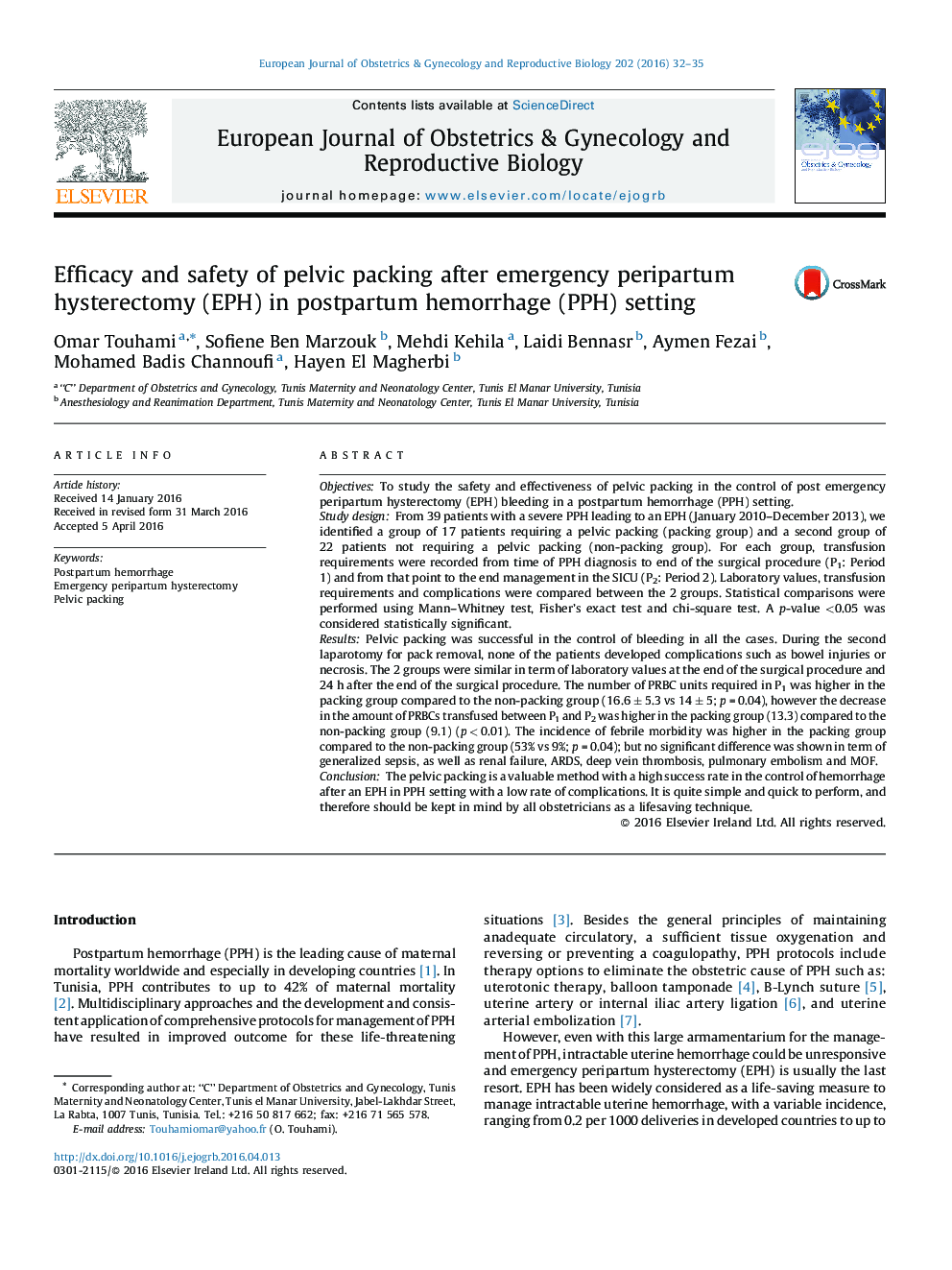| کد مقاله | کد نشریه | سال انتشار | مقاله انگلیسی | نسخه تمام متن |
|---|---|---|---|---|
| 3919218 | 1599779 | 2016 | 4 صفحه PDF | دانلود رایگان |
ObjectivesTo study the safety and effectiveness of pelvic packing in the control of post emergency peripartum hysterectomy (EPH) bleeding in a postpartum hemorrhage (PPH) setting.Study designFrom 39 patients with a severe PPH leading to an EPH (January 2010–December 2013), we identified a group of 17 patients requiring a pelvic packing (packing group) and a second group of 22 patients not requiring a pelvic packing (non-packing group). For each group, transfusion requirements were recorded from time of PPH diagnosis to end of the surgical procedure (P1: Period 1) and from that point to the end management in the SICU (P2: Period 2). Laboratory values, transfusion requirements and complications were compared between the 2 groups. Statistical comparisons were performed using Mann–Whitney test, Fisher's exact test and chi-square test. A p-value <0.05 was considered statistically significant.ResultsPelvic packing was successful in the control of bleeding in all the cases. During the second laparotomy for pack removal, none of the patients developed complications such as bowel injuries or necrosis. The 2 groups were similar in term of laboratory values at the end of the surgical procedure and 24 h after the end of the surgical procedure. The number of PRBC units required in P1 was higher in the packing group compared to the non-packing group (16.6 ± 5.3 vs 14 ± 5; p = 0.04), however the decrease in the amount of PRBCs transfused between P1 and P2 was higher in the packing group (13.3) compared to the non-packing group (9.1) (p < 0.01). The incidence of febrile morbidity was higher in the packing group compared to the non-packing group (53% vs 9%; p = 0.04); but no significant difference was shown in term of generalized sepsis, as well as renal failure, ARDS, deep vein thrombosis, pulmonary embolism and MOF.ConclusionThe pelvic packing is a valuable method with a high success rate in the control of hemorrhage after an EPH in PPH setting with a low rate of complications. It is quite simple and quick to perform, and therefore should be kept in mind by all obstetricians as a lifesaving technique.
Journal: European Journal of Obstetrics & Gynecology and Reproductive Biology - Volume 202, July 2016, Pages 32–35
